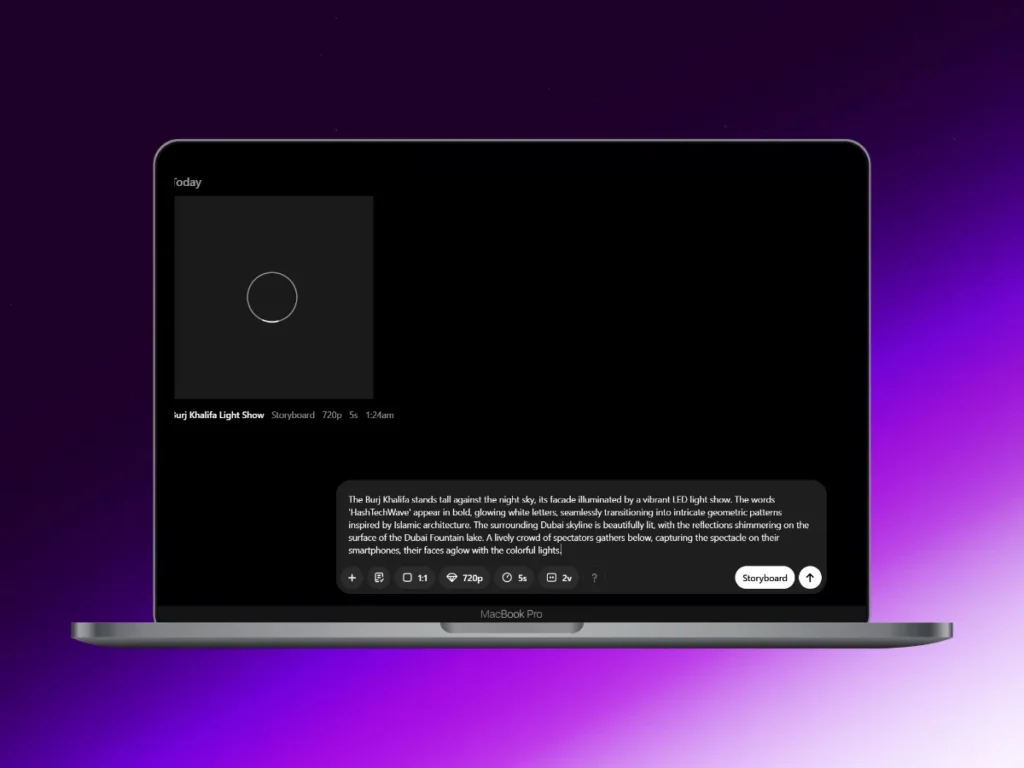Artificial Intelligence (AI) has came a long way and this time it is not just for computers. AI is being used in many different areas like one area where AI is making significant changes is in video creation. Sora AI by OpenAI is leading the way in making AI videos.
It uses prompts like Dall-E or GPT to make amazing AI videos. This blog post will explain what makes Sora AI so great at creating next-level AI videos and why it is becoming so popular.
Concept of Video Generation Using AI
Recently videos became popular in AI field and people desire appealing visuals that attract their audience interest. Old video production methods take time and money. AI videos provide an alternative.
Also Read: GPT-4o: Hype or Hope? Explore Latest Conversational AI
In February 2024 – OpenAI launched Sora AI, a game-changer in the media industry. The theory behind naming their text-to-video tool Sora is because, in Japanese, it means “the sky’s the limit.” Tim Brooks and Bill Peebles, the researchers and creators of Sora AI, gave this name because it Sets the imagination free to roam infinite landscapes.
From Prompt to Realistic Video Scenes – Future of AI
Haris Khan, a news writer who covers tech, cryptography and consumers tech
How Sora AI Generates Image
Sora AI employs a diffusion model approach. This means it starts with a noise-filled video frames. Then, it uses machine learning to gradually transform those frames into a visual depiction matching the user’s text input. Videos made by Sora AI can last up to 60 seconds.
It looks at many video frames at once. This means that even if objects move off the screen and back, they stay the same. This makes the program’s videos look more accurate and more accessible to use.
There was a time when text-to-image tools were new. Mid Journey launched in July 2022 and became famous for making images from text. Now, video technology has improved quickly. Companies like Synthesia, Colossyan, Runway, and Pika have created impressive models that turn text into videos.
Google is working on Lumiere, a model that makes videos from prompts. Lumiere is not ready yet, but the news says it may compete with Open AI’s Sora. Lumiere lets users make videos from still images using the latest Space-Time-U-Net model.
Risks and Limitations of Sora AI
Along with impressive features, Sora AI is not safe to work (NSFW) has some limits, such as the model not having a natural understanding of physics, which means it may not always adhere to “real-world” physical rules.

This means it may not follow real rules about the world. It might also have trouble knowing why things happen and what causes them. Because of this, the videos it makes might not always make sense. On top of that, objects in the videos it makes might move strangely. This could be an issue for looking into digital videos.
Just like other high-tech tools, using Sora AI has some risks. It could make hurtful content. It could spread untrue stories and ideas that are not fair or correct. Sora AI might also break copyright rules by using other people’s work. We have to be very careful to use this technology safely and in a good way. This is extra important for fake videos and fake pictures like deepfakes.
Who can Access Sora AI?
Currently, Sora is only open for people in the “red teamers.” They check the model to see if it could be risky or damaging which is also denoted by Sora AI NSFW (Not safe for work). OpenAI also let some artists, designers and filmmakers to use it. They wants to get feedback from these people. OpenAI knows that the current model might not show complicated scenes correctly. It could also get cause and effect wrong in some situations.

When can we use Sora? We don’t know yet, but it could happen soon. Mira Murati said a while ago that OpenAI wants to release the video maker this year. She did not give an exact date. In March, she said it would come out in “a few months.”
OpenAI wants to make Sora better. They will add audio to the videos it makes. This will make the videos seem more real. Murati expressed the company’s broader vision for Sora, envisioning it as a versatile tool for editing and content creation.
Open AI Sora Launch and Access
OpenAI officially released their text-to-video AI model on 9th Dec, 2024 and now it is available at Sora.com for ChatGPT Plus and Pro users, offering features like video generation from text, image animation, and video remixing.

If you have ChatGPT Plus subscription then you can generate up to 50 priority videos at 720p resolution while the ChatGPT Pro subscription offers unlimited video generations at 1080p.
This also includes tools such as “storyboards” for sequence-based video creation, photo-to-video transformation and scene blending. All AI-generated videos are marked with watermarks and C2PA metadata to indicate their origin.
Alternatives of Sora AI
Video creation has many tools. Sora AI is unique. But others exist, too. Like Runway Gen-2, Lumiere, and Make-a-Video, these are different models, but they offer varied choices. OpenAI also made some models. Each model is unique. They target different users. With video AI, there are many options. The market is diverse.
Also Read: Text-to-Image Realistic Generation Using Imagen3 Free
AI tech like OpenAI’s Sora can make videos. It might help create content, prototype ideas, tell stories with data, and aid teaching soon. But we must think about the risks and issues with this new tech.

In time, Sora AI could open uses for making advanced content, customized fun and learning, and real-time video editing, among others. This OpenAI model may blur lines between real and digital worlds, changing how we use AI-made video stuff. Exciting as the chances are, we need to move ahead cautiously with this new tech.
You may also like: What is a VPS and How Does It Help? Guide 2024
Conclusion
Sora, a pioneering model from OpenAI, is set to revolutionize the field of AI-generated videos. Even though it has some limits, It could change things in many businesses. As we start using AI to make videos, we need to be careful. We must make sure this new technology is used in good and responsible ways. We don’t want people to misuse it or cause harm.








